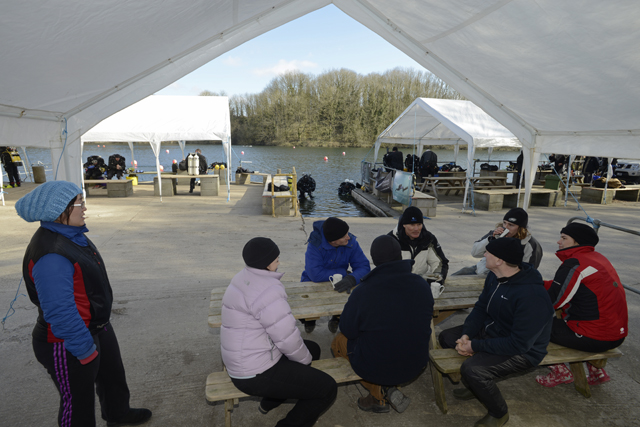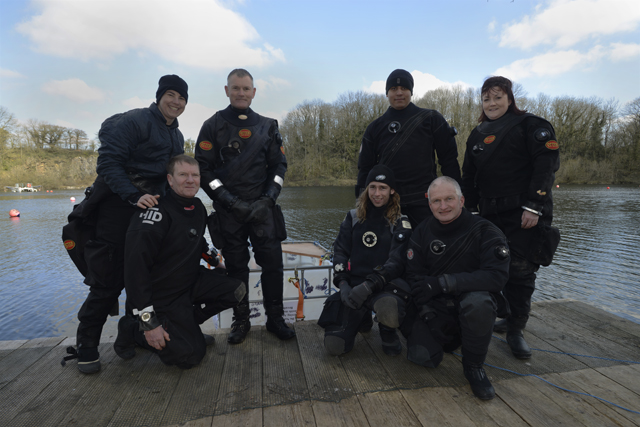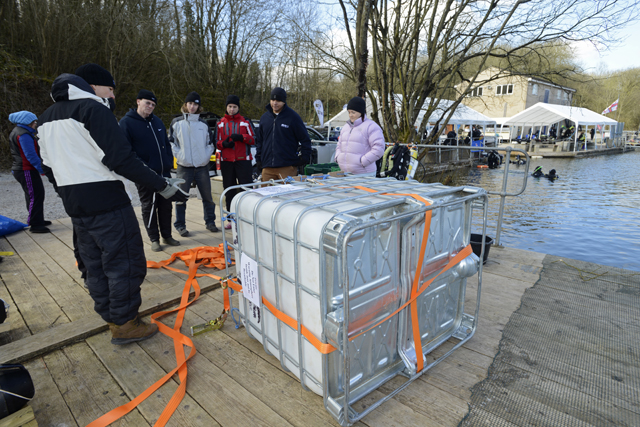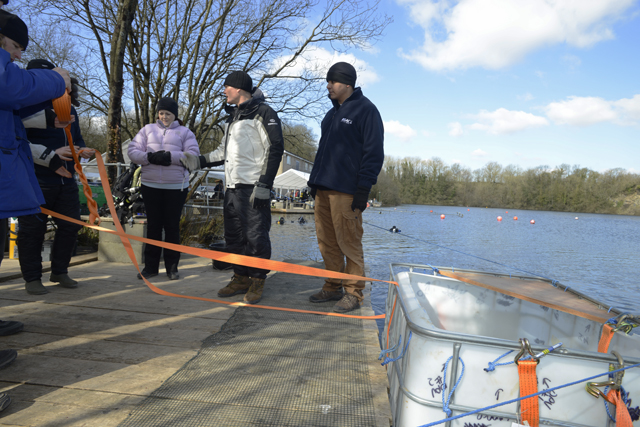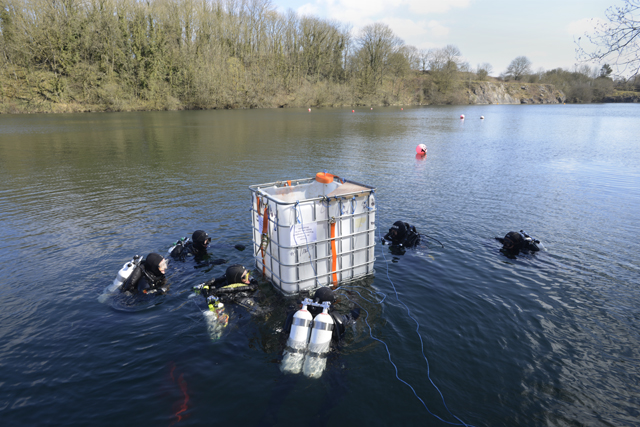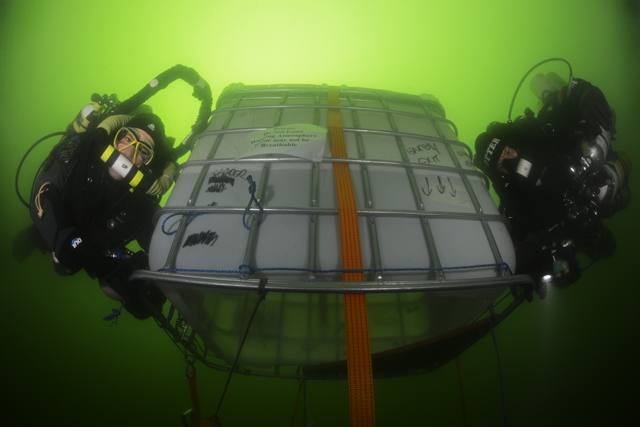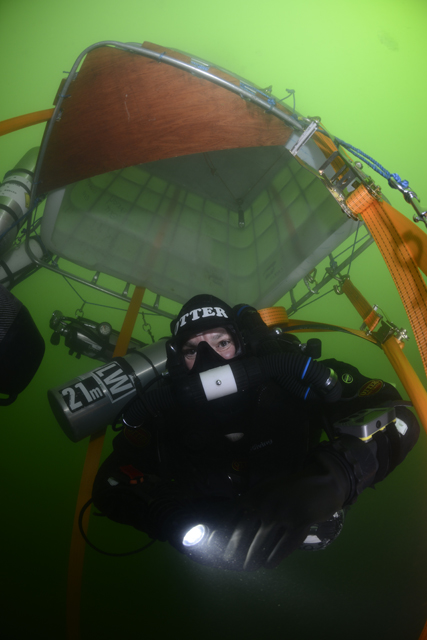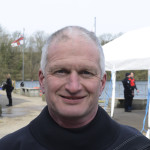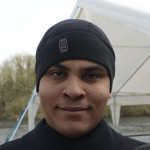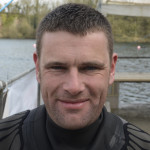News
Becoming a PADI Tech Support Diver
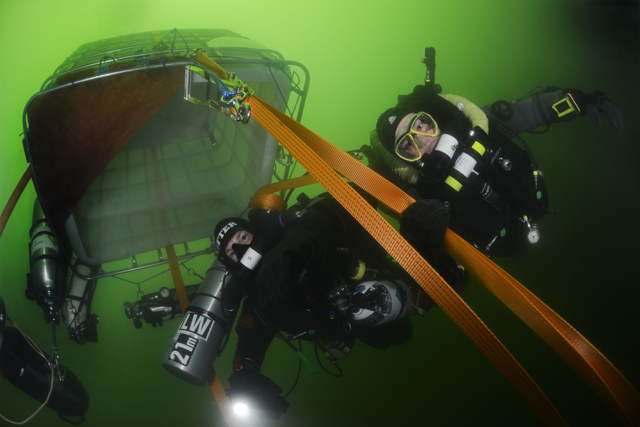
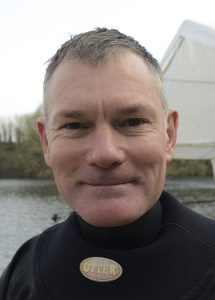 Cropping up alongside PADI’s growing list of TecRec training courses are a number of distinctive specialties focusing on the more diverse aspects of technical diving. By popular request, Martin Robson, who is one of PADI’s designated instructor trainers, has written a new specialty course to teach the roles and responsibilities of a support diver typically needed on expedition level dives.
Cropping up alongside PADI’s growing list of TecRec training courses are a number of distinctive specialties focusing on the more diverse aspects of technical diving. By popular request, Martin Robson, who is one of PADI’s designated instructor trainers, has written a new specialty course to teach the roles and responsibilities of a support diver typically needed on expedition level dives.
Martin invited me along to inland diving site Vobster Quay to check out his inaugural 2-day course. On a particularly cold, crisp Saturday morning in April I packed up my trusty drysuit complete with newly fitted dry gloves and made tracks for Frome near Somerset. In this instance my job was to observe rather than participate. Martin had pre-warned me that the water temp would be a toe tingling 3 degrees. The support diver specialty course works much better with a team of divers so at least I wasn’t going to be the only numpty braving the elements!
Martin has more than 30 years of diving experience. His long list of credentials include PADI, IANTD, TDI and cave diving agencies up to instructor trainer trimix CCR level. Throughout the years he has planned and executed a substantial amount of wreck and cave expeditions to a maximum depth of 180m which provided the foundation for this course. Martin runs EAU2 Advanced Diver Training as well as organising new expeditions. He conveniently lives just 10 minutes drive from Vobster Quay where most of his tech training work is conducted. Martin huffed and said “I know Vobster far too well.”
I was interested to know what had inspired Martin to write this specific PADI distinctive specialty course in the first place. Martin said he had recently given presentations at Oztek in Sydney, the Polish dive show in Warsaw and at the Eurotek conference on some of his expeditions. There had been a lot of questions from the audience about becoming a support diver, underwater habitats and expedition diving in general so the idea just grew from there. Martin wrote the basic structure of the course in 2 days and then submitted it to PADI for approval. He said “support staff are used in a whole range of roles depending upon the requirements of the particular mission, but common roles include pre-exploration dive equipment preparation and positioning, in-water equipment provisioning during the dives, safety and rescue support, and surface management. Being a support diver is a great way to get involved in expedition diving and gaining experience of the roles and techniques support divers need is both fun and challenging.”
Seven divers turned up for the weekend event which included some theory, a dry practical session and 4 training dives. Minimum certification requirements are PADI rescue diver and Tec Rec 40 or Tec Rec 40 CCR diver with a minimum of 10 dives on whatever rebreather was being used on the course. I noticed that there were plenty of different equipment configurations varying from CCRs to sidemounts. But this course wasn’t about diving deep; in fact, the habitat itself would be anchored to the crushing works at a depth of around 6 metres. The other practical sessions were performed by the plane wreck which is no deeper than 18 metres.
After tea and bacon sandwiches Martin gathered everyone together to talk about the differences between a support diver, a standby diver and a safety diver. We then got our first glimpse of the underwater habitat, which in this case, was a plastic box encompassed in a metal framework roughly 2m long x 1m wide x 2m high, suitable for 2 divers. Martin said he has used much bigger habitats and on one particular expedition it turned out to be too big and got wedged inside the cave entrance!
At this point it’s probably worth explaining what an underwater habitat is actually used for. Martin said that habitats help exploration divers stay warmer and make rehydration easier while decompressing, which is basically the same concept as a diving bell used in commercial saturation diving. But in this case the divers don’t breathe the gas inside the habitat, as this would soon become unbreatheable; instead they breathe from gas mixes that they are either carrying with them, or that are hooked onto the habitat or are being carried by support divers. This obviously varies depending on the dive, location and equipment available. They have exactly the same decompression obligations as being in water – the main difference is that the divers can surface inside an air pocket, which just makes life a bit more comfortable.
For Dive 1 ‘Team Robson’ assembled on the platform and lowered the habitat into the water. This was towed into position over to the top of crushing works and sunk. The whole operation required some nifty teamwork skills, especially during the underwater anchoring and making buoyant phases. Untangling the underwater comms cable proved to be the most taxing part of the day. The idea was to have a telephone system connecting surface support to the divers inside the habitat, but the unit was playing up and eventually got packed away. Dive 2 focused more on supporting the lead diver. This time, in teams of 2, the task was to unclip and exchange all 4 stage cylinders attached to Martin, which turned out to be a lot more fiddly than expected. One of the divers managed to lose his torch during all the fun and games so Dive 2 was rounded off with an additional search and recovery exercise. Being a support diver requires many different skills!
On Sunday morning I managed to jump in with Martin and Graham Allathan (who has been a support diver on a number of Martin’s previous expeditions) to get a few undisturbed underwater pictures of the habitat. Visibility was at best 3 or 4 metres but at least Martin and Graham were using rebreathers so there were no exhaled bubbles to worry about, although the floaty mouthpiece of Graham’s twin rebreather unit looked slightly out of place.
By the time we surfaced the rest of the team were kitted up and ready for Dive 3, which involved looking after lead diver Martin while he was decompressing inside the habitat. This included monitoring gas supplies, changing cylinders and battery packs, supplying food and drink etc. Everybody then got the chance to surface inside the habitat, have a drink, eat some food and do a simulated gas exchange. The final dive was basically the reverse of dive 1 so the habitat was brought to the surface in a controlled manner and towed back to the platform. At the end of a very full on weekend I sat down with Martin to get his thoughts on the very first support diver distinctive specialty course. He said ‘‘I thought the course went extremely well. It was nice to see everyone having fun and learning at the same time.”
Martin’s main passion is cave exploration and I think this is where underwater habitats are best suited. From my own perspective it was great to see a group of individual divers interacting and working together as a team. Exchanging cylinders, getting used to clips, D-ring positions etc is definitely a useful skill to practice. I haven’t had any experience with major expeditions involving a team of divers, so Martin’s support diver course gave me a good idea of what to expect. I think one of Martins own blog comments summed up the weekend quite nicely – when asked what attributes do you look for in an expedition diver, Martin said “I look for a team player who shares the team philosophy and goals, who is self disciplined, works hard and who can be relied upon when the chips are down but also knows when to have fun.”
—————————————————————————————————————————————————————————
Course comments
From: Weston Supermare
Level: TDI trimix, PADI Instructor
Dives: 700
“The course was a fascinating insight into what goes into supporting expedition level diving. The weekend was interesting, challenging and immense fun all at the same time.”
From: Bristol
Level: TDI Instructor, PADI Instructor
Dives: 800
“Overall I thought it was a good opportunity to learn from someone who has done real expeditions. I picked up some great tips. I would love to get involved with real life expeditions.”
From: Liverpool
Level: PADI tec 40, BSAC advanced diver
Dives: 400
“First enjoyable weekend I have had since I got back into diving. Brilliant exercise in teamwork. It’s given me a major insight into expedition planning and training.”
From: Swindon
Level: IANTD CCR Mod 1
Dives: 500
“It was me that actually asked for the specialty in the first place! I spoke to Martin at the Eurotek show after his talk on the blue lakes project. I wanted to get an understanding of what’s required of a support diver and so Martin set up the PADI distinctive specialty.
“I thought the weekend was excellent fun, well organised and gave me a great insight into being both shore and underwater expedition diving. The course will benefit any tech diver in terms of practice and skills.”
From: London
Level: PADI Divemaster, IANTD ART
Dives: 215
“I learnt some amazing things that I don’t usually think about. Clipping off cylinders is completely different when you are doing it on someone else. I loved the teamwork aspect and the application of existing skills but in a different way.”
From: Bournemouth
Level: IANTD, BSAC Club Instructor
Dives: 300
“Great fun weekend. It’s given me a small glimpse into the logistics, skills and teamwork of an expedition.”
From: Scotland
Level: IANTD CCR trimix
Dives: 1000 plus
“I’m the whipping boy! I wanted to learn more about habitats, practice for real and do some experimentation to set up properly.”
—————————————————————————————————————————————————————————
It was a pretty good course. You can read all the theory but it’s different in practice. It was nice to see everyone enjoying the weekend. There’s a much better atmosphere with groups.
To find out more about the technical diving courses that Martin offers visit www.eau2.com.
Discuss this article in the Scubaverse Forum.
Gear News
Introducing the TR-80, IR-50 and CS-30 Regulators from DYNAMICNORD

Whether you are a beginner or a professional diver – with the three new main regulators from DYNAMICNORD, everyone will find their favourite regulator. They all look super stylish.
Excellent performance with the TR-80
Quality and performance are the be-all and end-all for regulators. It is not for nothing that the TR stands for Tec Reg. The innovative design of the TR-80 guarantees absolute reliability – even in ice-cold waters.

Perfect breathing effort at 0.8 J/l / certified for diving in waters below 10 degrees / structural design made of solid brass for best cold protection / membrane-compensated design with dry seal of the first stage / reduced exhalation effort thanks to optimized exhalation membrane and bubble deflector / adjustable Venturi (dive/predive) and adjustment knob for individual inhalation comfort / innovative design of the front cover prevents free-flow in strong currents or when diving with scooters / design made of sandblasted brass, matt chrome finish / 2 HP and 4 LP outlets / mouthpiece made of high-quality, anti-allergic silicone for maximum comfort.


Amazing underwater adventures with the IR-50
The IR-50 is the top regulator for advanced and experienced divers. Natural breathing is the essence of this regulator.

Ideal breathing effort at 0.8 J/l /certified for diving in waters below 10 degrees / compensated membrane / adjustable venturi (dive/predive) and adjustment knob for individual inhalation comfort/ outlet valve and deflector for minimum exhalation effort and reduction of bubbles on the face / design made of sandblasted brass, matt chrome finish / 2 HP and 4 NP outlets / mouthpiece made of high-quality, anti-allergic silicone for maximum comfort.


The Workhorse – our CS-30
For diving centres and diving beginners – the workhorse stands for strong construction, reliability and robustness. Perfect for your training.

Optimal breathing effort at 0.8 J/l /recommended for diving in waters above 10 degrees / non-compensated piston / adjustable venturi (dive/predive) / outlet valve and deflector for minimum exhalation effort and reduction of bubbles on the face / design made of sandblasted brass, matt chrome finish / 1 HP and 3 NP outlets / mouthpiece made of high-quality, anti-allergic silicone for maximum comfort.


Octopus OP-30
The OP-30 is the ideal addition to all DYNAMICNORD regulators. It is identical in construction to the CS-30.

The TR-80, IR-50, CS-30 (DIN & INT) regulators and the Octopus OP-30 are available from DYNAMICNORD dealers and in the online store.
DYNAMICNORD – Your Outdoor Companion.
Marine Life & Conservation
Paul Watson Released as Denmark Blocks Japan’s Extradition Bid

Renowned anti-whaling activist Paul Watson has been released from custody in Greenland after spending five months in detention. Denmark’s Justice Ministry rejected Japan’s request for his extradition, citing insufficient guarantees that his time already served in custody would be credited against any potential sentence.
The 74-year-old Canadian-American was arrested on July 21 in Nuuk, Greenland’s capital, when his ship docked to refuel. His arrest was based on a 2012 Japanese warrant related to a 2010 encounter in Antarctic waters. Japan alleged Watson obstructed operations and caused damage to a whaling research ship during efforts to disrupt illegal whaling. Watson has consistently denied these claims, maintaining his commitment to marine conservation.
Denmark, which oversees extradition matters for Greenland, concluded that while the legal conditions for extradition were met, the lack of assurances from Japan regarding time-served credit made extradition untenable.
In a video shared by his foundation, Watson expressed gratitude and relief, saying, “After five months, it’s good to be out… and good to know they’re not sending me to Japan.” He added that the most difficult part of his time in custody was being separated from his two young sons.
Watson is a pioneering figure in marine conservation, known for founding the Captain Paul Watson Foundation in 2022 after decades of activism with the Sea Shepherd Conservation Society. His bold efforts to defend marine life have earned him widespread support, including from celebrities and conservationists. His work has also been featured in the acclaimed reality TV series Whale Wars.
Watson’s lawyer, Jonas Christoffersen, praised the decision, stating, “We are happy and relieved that Paul Watson is now free.” He added that Watson is eager to reunite with his family and continue his vital work.
The arrest occurred while Watson’s vessel, the M/Y John Paul DeJoria, was en route to the North Pacific with a team of 26 volunteers to intercept a Japanese whaling ship. His foundation described the arrest as politically motivated and emphasized that Watson’s actions were focused on ending illegal whaling practices.
Japan resumed commercial whaling in 2019 after leaving the International Whaling Commission, asserting that whale meat is a cultural tradition. Conservationists, however, continue to challenge these practices, highlighting their impact on marine ecosystems.
Despite the challenges, Watson remains steadfast in his mission to protect marine life and bring attention to whaling practices. His dedication to ocean conservation has made him a globally respected advocate for the environment.
-

 News2 months ago
News2 months agoIconic SS United States to become the World’s Largest Artificial Reef
-

 News3 months ago
News3 months agoBook Review – 52 Assignments: Underwater Photography
-

 Gear News3 months ago
Gear News3 months agoDYNAMICNORD – New German diving brand enters the British market
-

 News3 months ago
News3 months agoExploring Cenote El Pit: A Diver’s Dream
-

 Gear News3 months ago
Gear News3 months agoTry BARE drysuits (and maybe even win one!) this Friday with Sea & Sea at North West Dive Fest
-

 Marine Life & Conservation3 months ago
Marine Life & Conservation3 months agoBook Review: Coral Triangle Cameos
-

 Blogs2 months ago
Blogs2 months agoDive the Egyptian Red Sea this Autumn with Regaldive
-

 News3 months ago
News3 months ago2024 Ocean Art Underwater Photo Competition Announced


